A perfect mini break in Flanders
The historic city of Leuven in Belgium is located deep in the heart of the picturesque region of Flanders. It is overflowing with bustling charm and warmth.
Did you know that if you hop on a train from central London to Leuven, you’ll be indulging in waffles and Belgium beer in under three hours? Undoubtedly this makes Leuven a perfect location for a European mini break.
Leuven is easily explored on foot, with its magnificent historical landmarks and grand squares within a short stroll of the breath-taking Grote Markt. Stroll amongst Leuven’s captivating, cobbled lanes and venture off on a voyage of Flemish discovery.
In 2022 Leuven was voted 5th as a “European Best Destinations”, why not uncover its heritage and culture for yourselves?
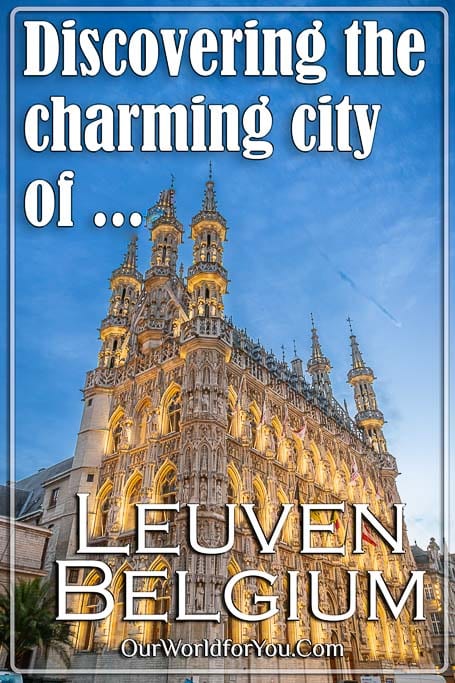
Where is Leuven?
How to get to Leuven
- By Train
Start creating your own Leuven adventure by train and discover the cultural delights of this picturesque city at a relaxed pace. Explore the sites amongst the charming city streets.
In under 2 hours and 50 minutes from the UK, hop on the Eurostar to Brussels, change onto a Belgium National Rail train to Leuven, and your Flemish fun begins.
- By Car
If you’re venturing from the UK, jump on Le Shuttle and tour Belgium under your own steam.
Alternatively, it’s so easy to visit Flanders on a road trip. Rental Cars search multiple well-known car hire brands and find the best deals that suit you.
A brief history of Leuven
A Flemish city with a soulThe historic city of Leuven indeed has had a rich and cultural past. The charismatic city first came to European prominence in the Duchy of Brabant during the 12th-century. Trading flourished in Leuven due to its positioning along the River Dijle.
The city’s wealth grew, leading to abbeys and churches being constructed along with its medieval city walls, the remains of which can be seen in Sint-Donatus Park.
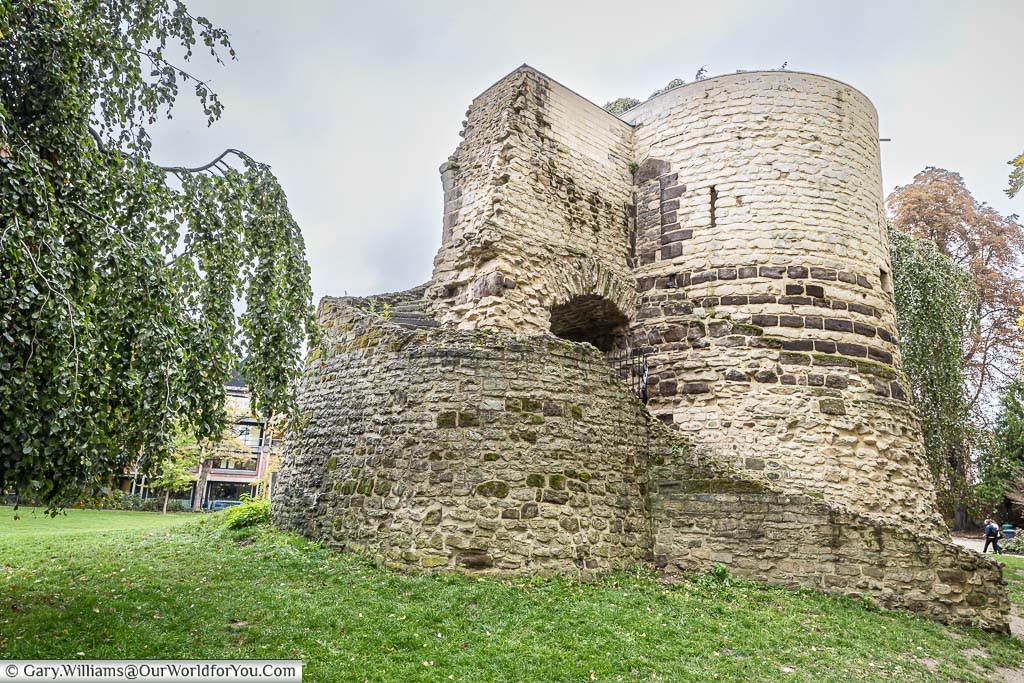
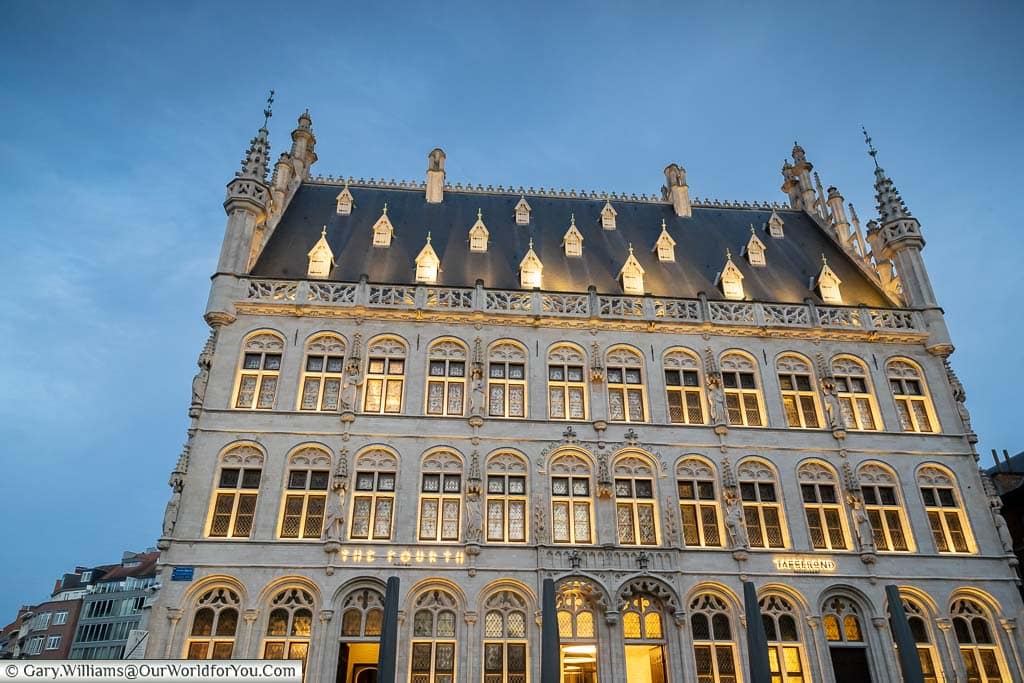
Fast forward, and the brewing industry was coming to the forefront of Leuven. Den Hoorn Brewery had been brewing beer since 1366; however, in 1708, Sebastien Artois became the master brewer and purchased the brewery in 1717, renaming it Brouwerij Artois. The now world-famous ‘Stella’ was originally produced as a Christmas beer in 1926. Due to its popularity, it was soon brewed year-round.
Leuven suffered heavily during the two World Wars. In the First World War, around 300 civilians died, and Leuven’s notable university library in Cloth Hall was destroyed. Also, a huge fire in Saint Peter’s Church caused its roof to collapse.
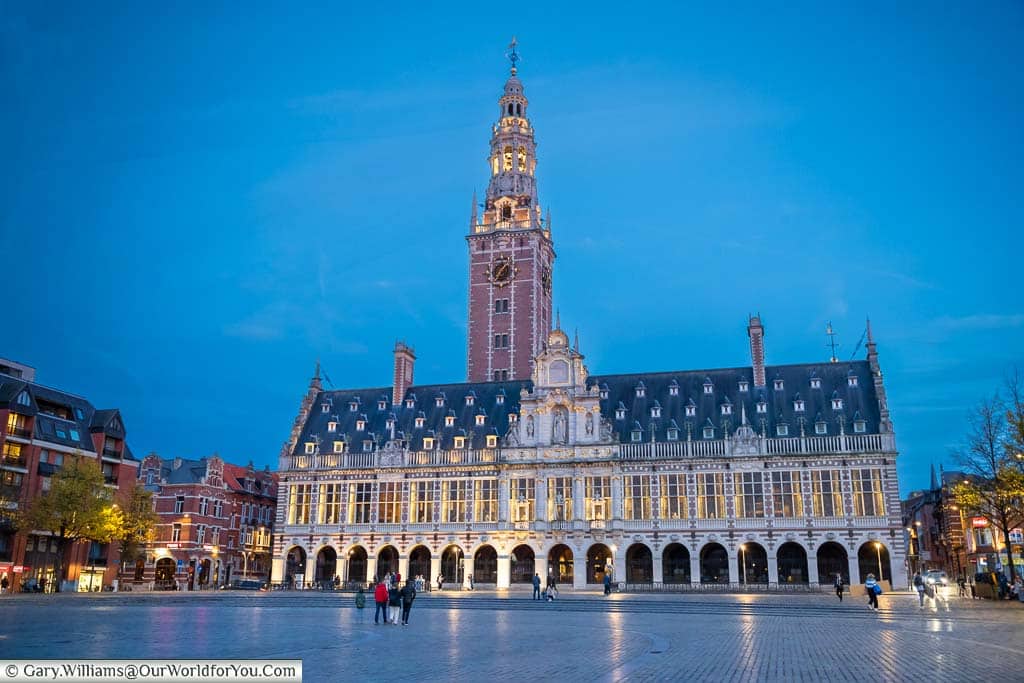
Tourist Information
A guided tour of Leuven Town Hall
Breath-taking Gothic splendourThe magnificent Gothic Town Hall in Leuven needs to be seen to be believed; its façade is stunning. It stands so grand and elegant in Leuven’s Grote Markt. The surrounding Market Square is encircled by so many striking buildings. Still, the imposing Town Hall is in a league of its own.
The Town Hall was designed by three architects in the Brabantine Late Gothic style, and each architect added their own unique mark. Especially Matheus de Layens, who contributed the six resplendent turrets and the parapet that runs around the building.
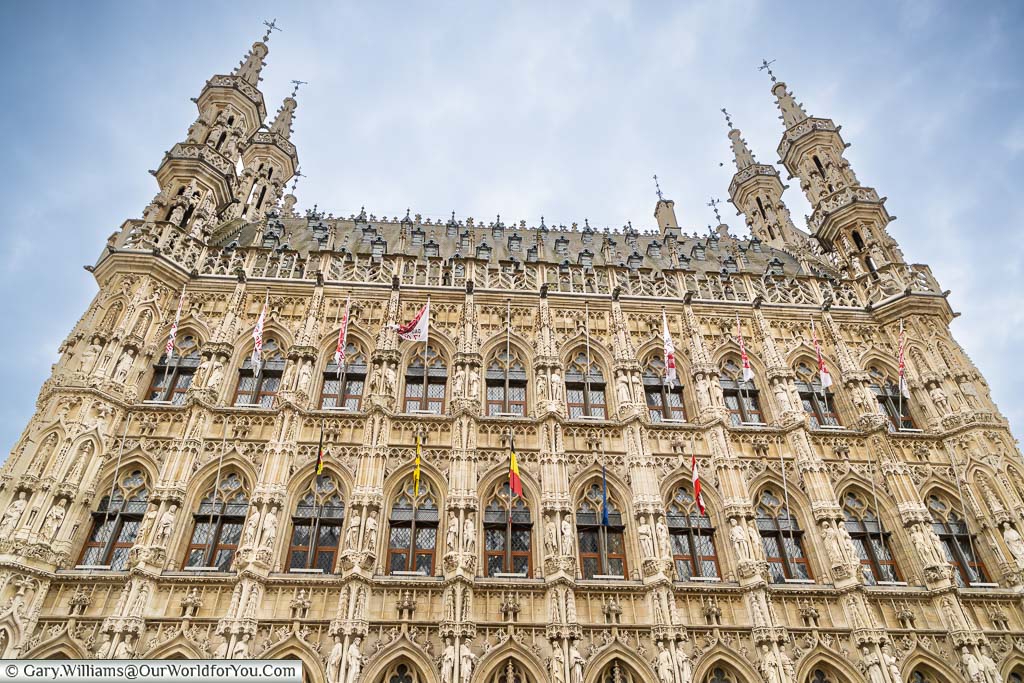
Our guided Town Hall tour was incredibly informative. It gave us an in-depth insight into the history of Leuven’s Town Hall and an appreciation into Leuven’s ancient past and how the city evolved over the centuries.
We were informed that centuries ago, Leuven had a bit of a rivalry with Brussels, so for everything they built, Leuven would do it bigger. Saint Peter’s Church, the Guildhall, and the Town Hall.
The construction of Leuven’s majestic hall took thirty years to complete, from 1439 to 1469 and required a row of houses to be demolished. The cellars of these homes can be visited beneath the hall.
The intricate façade of the Town Hall is constructed over three storeys, and all along each floor are pointed gothic stone windows. Within the steep-pitched roof are four tiers of magnificent dormers.
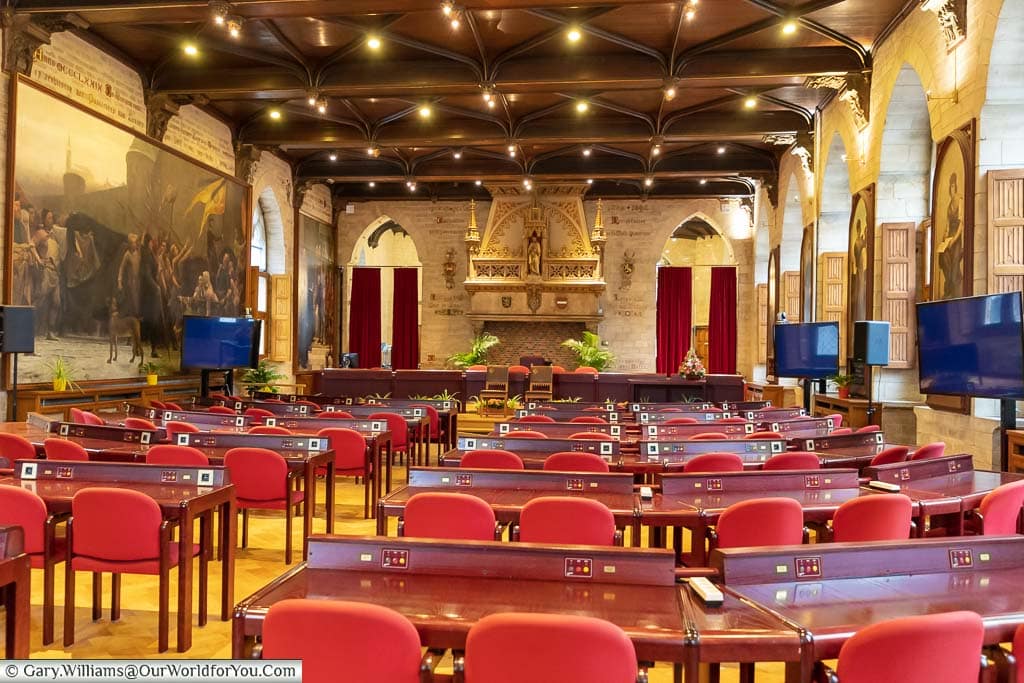
Although the hall was built in the early 15th-century, it wasn’t until 1850 that 236 ornate statues were added between each window. The statues represent Leuven’s rich history and fascinating past. The ground floor depicts figures of artists, scholars, and other famous local people. The first floor includes patron saints, and the second floor represents the Counts of Leuven and the Dukes of Brabant.
Presently there are 235 statues on display, as the figure of King Leopold II was removed in 2020 due to his colonial past. There are also only 15 statues dedicated to women.
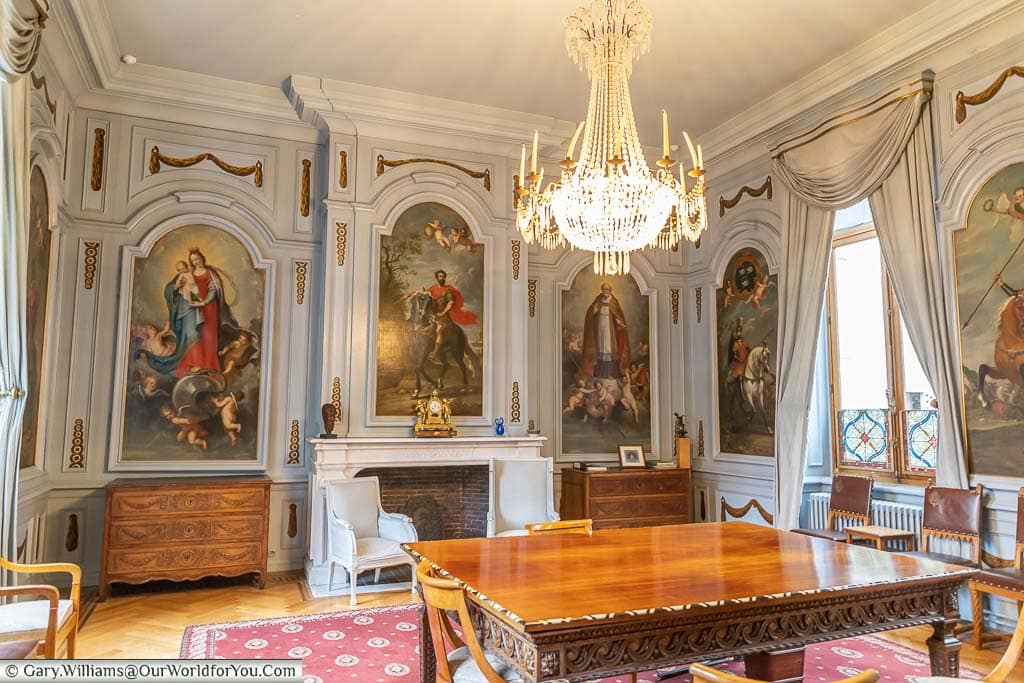
We were guided into the grand medieval foyer and to the historic room where loans and monies were distributed centuries ago. We then continued upstairs to the ornate reception rooms and onto the vast Gothic Hall lined with eleven wonderful paintings by Andre Hennebicq, a Tournai artist.
Miraculously Leuven’s Town Hall escaped damage in WWI and suffered very little in WWII.
Visiting Saint Peter’s Church
A unique modern experienceSaint Peter’s Church is located in the Grote Markt, the historical heart of Leuven and has many fascinating stories to tell.
The first church founded on this consecrated site was built in 986 and is the oldest parish church in Leuven. Unfortunately, this ancient church was destroyed by a fire in 1176, and a Romanesque church was erected in its place with two round towers.
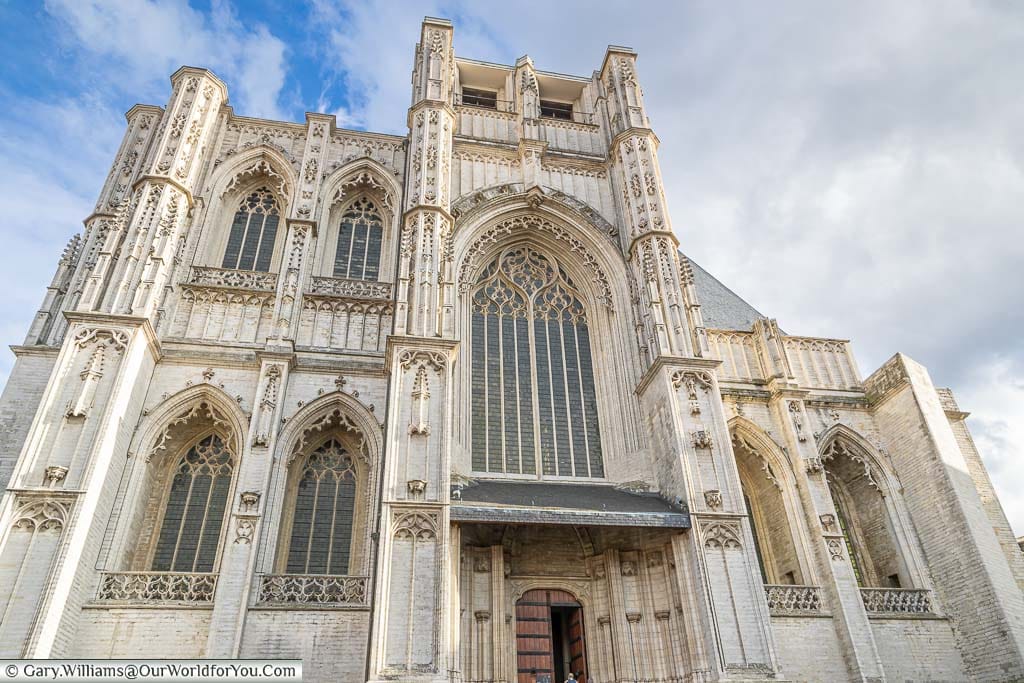
Construction of the present church began in 1425. It was built in the same Brabantine Late Gothic style. It was designed by the same architect involved with the building of the Town Hall, which was to commence just over a decade later.
The unusual aspect of this church is that the towers at the front were never completed, although a few attempts were made. The original plans included a 170 metre; however, due to weak foundations, the towers collapsed and were eventually reduced to a third of their original size.
Despite the tower not reaching its promised height, it is listed on the UNESCO World Heritage Site as one of the significant Belfries in Belgium and France.
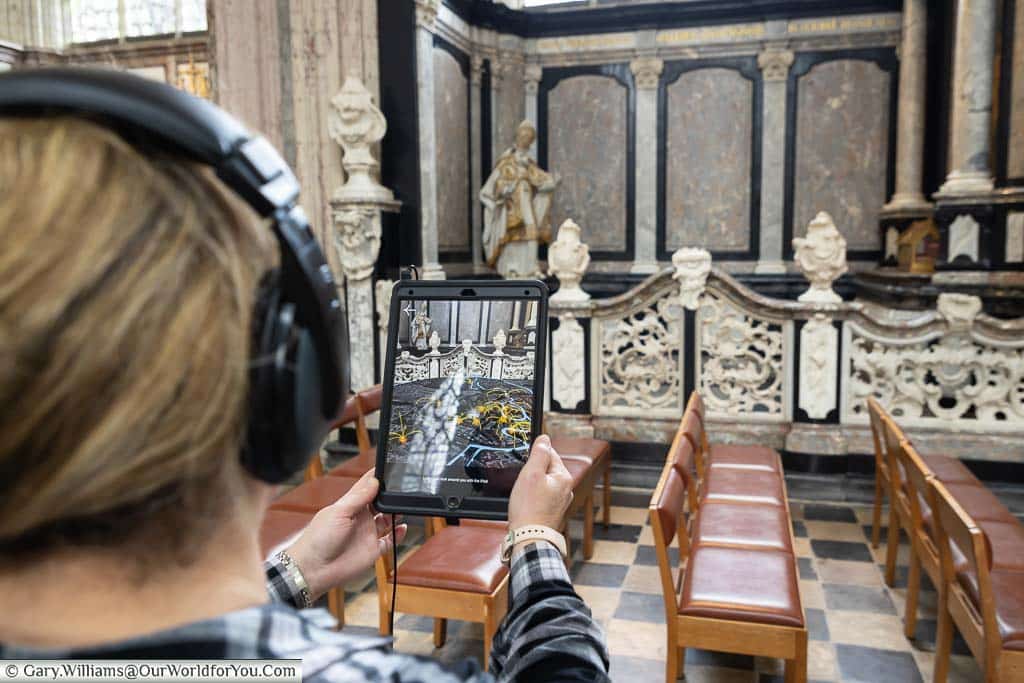
A quirky new visitor experience introduced at Saint Peter’s Church in 2020 is viewing its magnificent treasures via a tablet or the ‘hololens’. You’ll gain a whole new insight into the masterpieces, which virtually brings them to life.
Using these interactive devices is fascinating as you genuinely appreciate the story behind the artwork in front of you. If you choose the ‘hololens’, you’ll enjoy the whole 3D experience with built-in cameras and speakers.
One particular piece of artwork to look out for in Saint Peter’s Church is ‘The Last Supper’ by Dieric Bouts. This triptych is still located within the same chapel it was painted for almost 600 years ago.
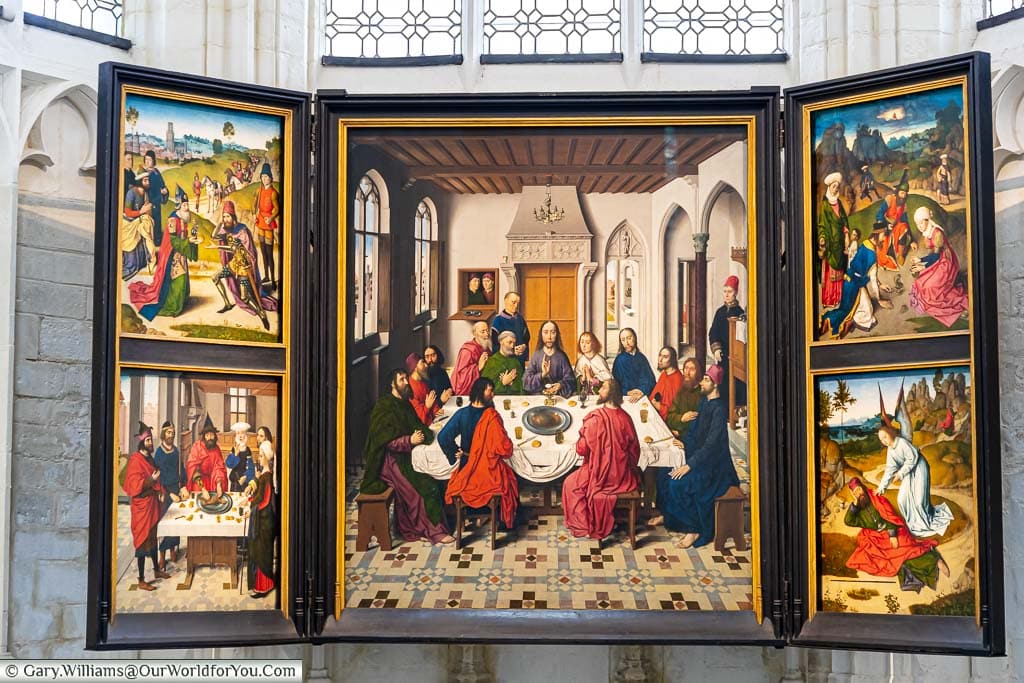
If you’re heading off on a Belgium adventure, then grab a copy of this DK Eyewitness book. I love planning road trips and these guides are so helpful.
I find them extremely informative, easy to follow and the pictures and maps tempt you into discovering more of the back roads.
Exploring Leuven’s University Library
A phoenix from the ashesLeuven’s magnificent University Library stands proud, overlooking Mgr. Ladeuzeplein is the largest open square in Leuven. The University Library forms part of KU Leuven, founded in 1425, the oldest university in the Low Countries.
The original university library was built in the 17th-century and was located in the Cloth Hall near Grote Markt. During WWI, the library was destroyed along with its vast collection of historical books and manuscripts.
The university library was rebuilt in Mgr. Ladeuzeplein, in the neo-Renaissance style and opened in 1928, this important project was a gift from the American people to the city of Leuven.
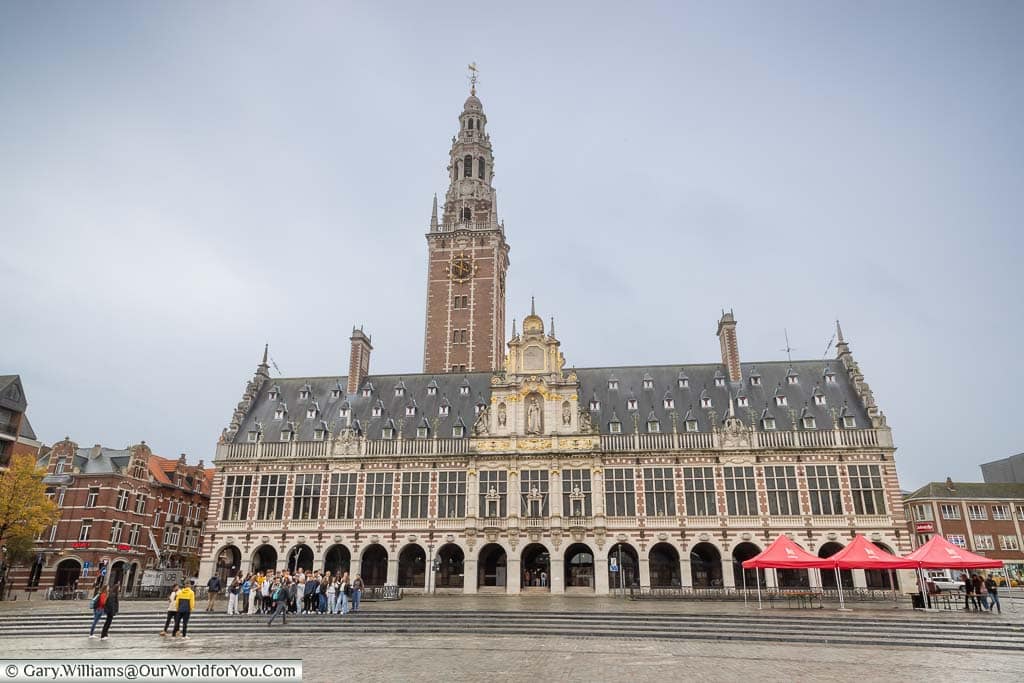
Unfortunately, the recently constructed library was destroyed by shelling in World War II. Once again, their collection of nearly a million books was lost. After the war, the library was reconstructed again, virtually mirroring the original plans. In 2003 a substantial renovation was completed on the university library, and looks magnificent.
A visit to the Leuven’s University Library and Tower is a must, pick up your audio guide linked with your downloaded Heritage App, and you’ll discover fascinating snippets of information.
The stunning wood-panelled library is captivating; you feel like you have stepped into Hogwarts, and the cylindrical ceiling lights almost appear suspended in the air.
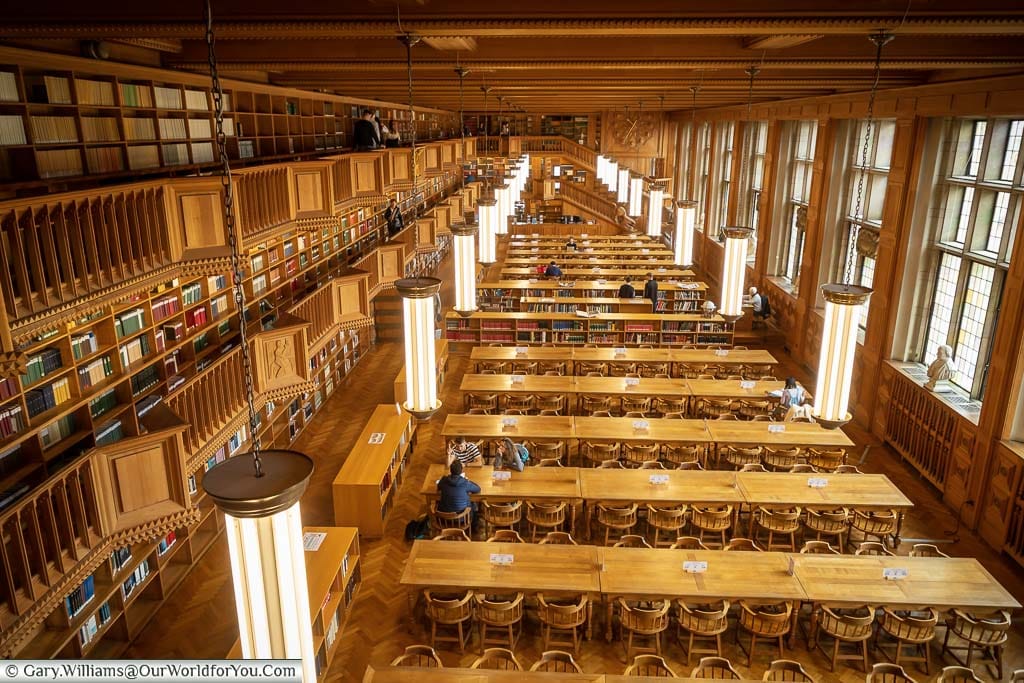
Head up the two flights of stairs and stroll around the library’s balconied perimeter to get a birds-eye view of the scholars studying below. You’ll be rubbing shoulders amongst over 1.5 million well-thumbed books and
To capture a panoramic view across Leuven’s rooftops, head up to the fifth floor of the library tower, following the photo exhibition as you go.
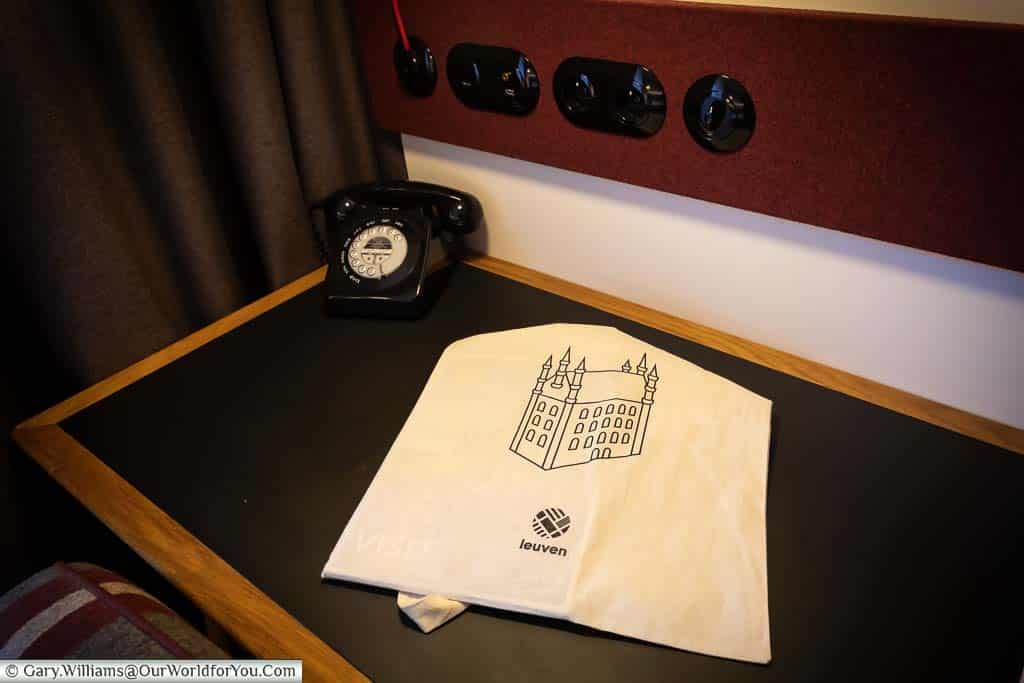
Visiting museum ‘M’ Leuven
Discovering art contemporary & historical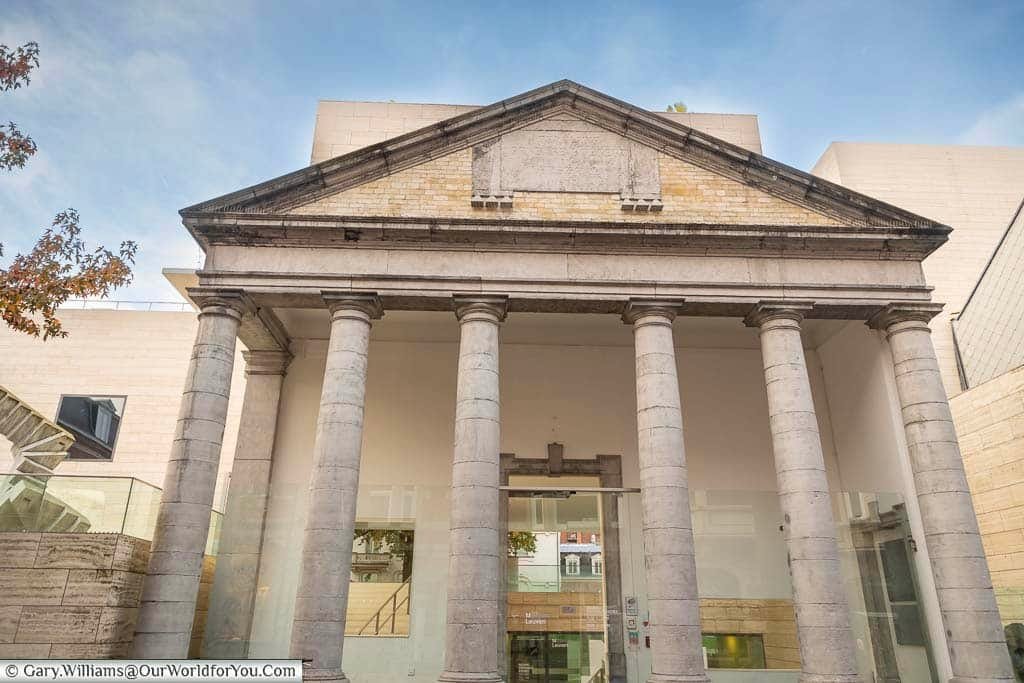
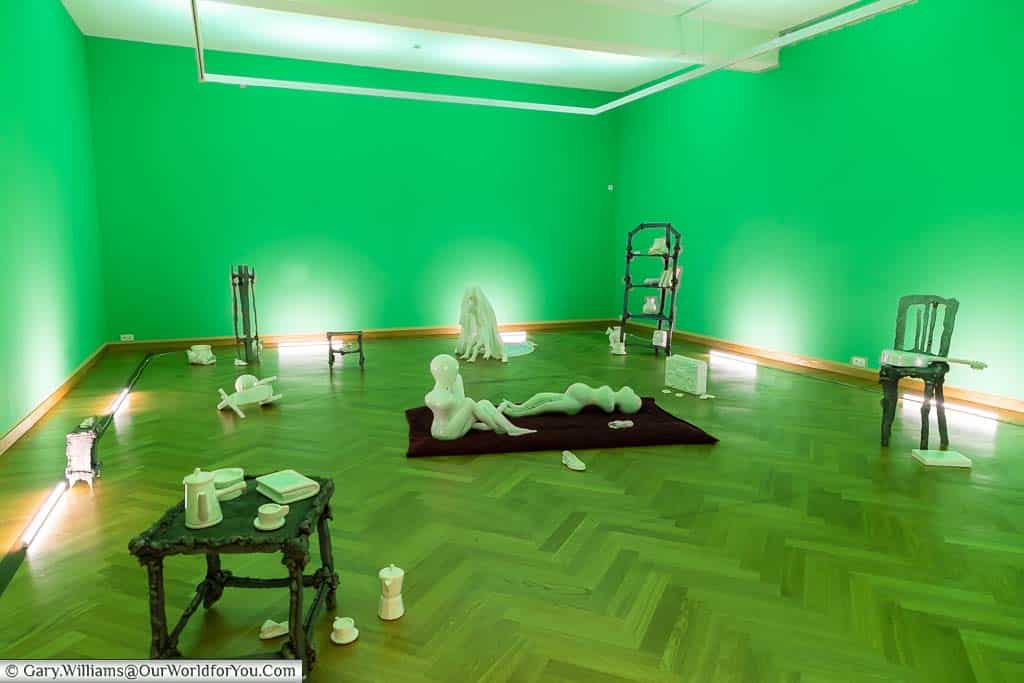
Exploring Park Abbey
Home of the Norbertine fathersThe beautiful Park Abbey and its tranquil estate are set across 42 hectares of land and are just a short bus ride from the centre of Leuven.
Park Abbey was once a game reserve, and in 1129 Count Godfrey I of Leuven donated the grounds to the Norbertine Abbey of Laon in northern France. Incredibly the Norbertine fathers have continuously lived at the abbey ever since. The Norbertines are quite distinctive in their attire as they wear a white habit.
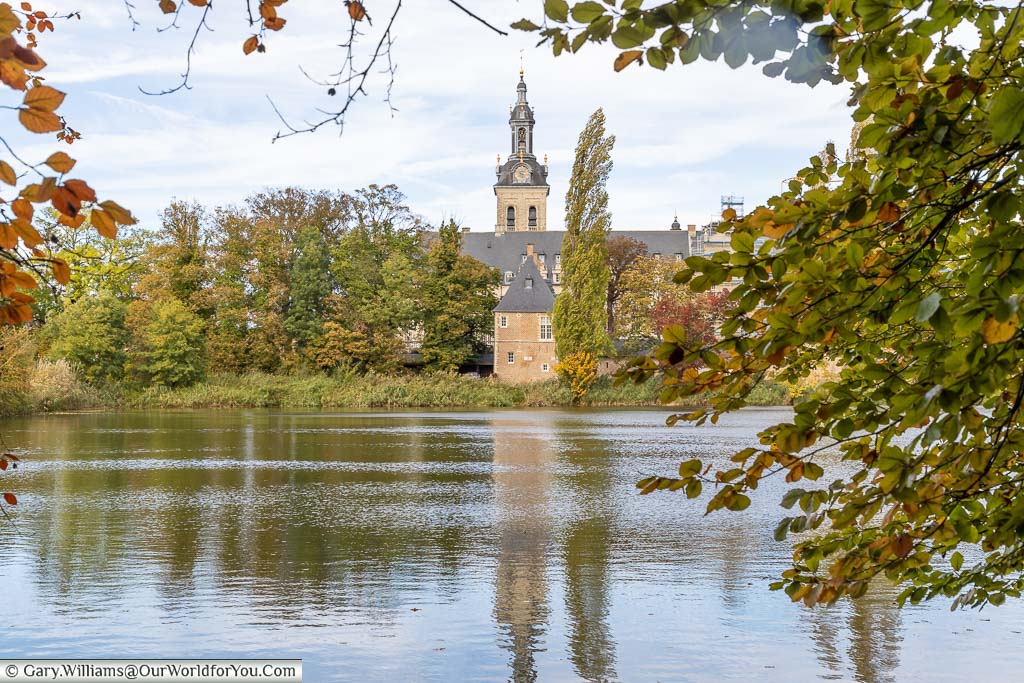
Park Abbey is a perfect place to visit if you enjoy peace and tranquillity, learning about different cultures and their heritage and strolling amongst picturesque surroundings.
The monastery and its neighbouring buildings, the watermill, gatehouses, and the church have virtually remained unchanged since the 17th-century. A huge restoration project was undertaken by the City of Leuven, and the magnificent library, cloisters and refectory have re-opened to welcome visitors.
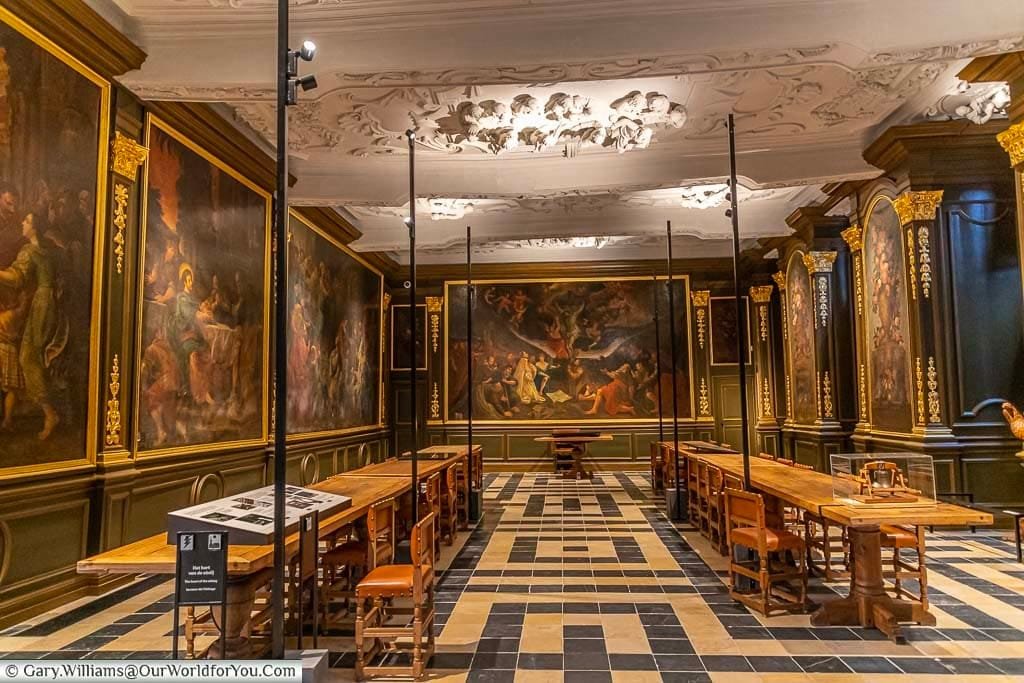
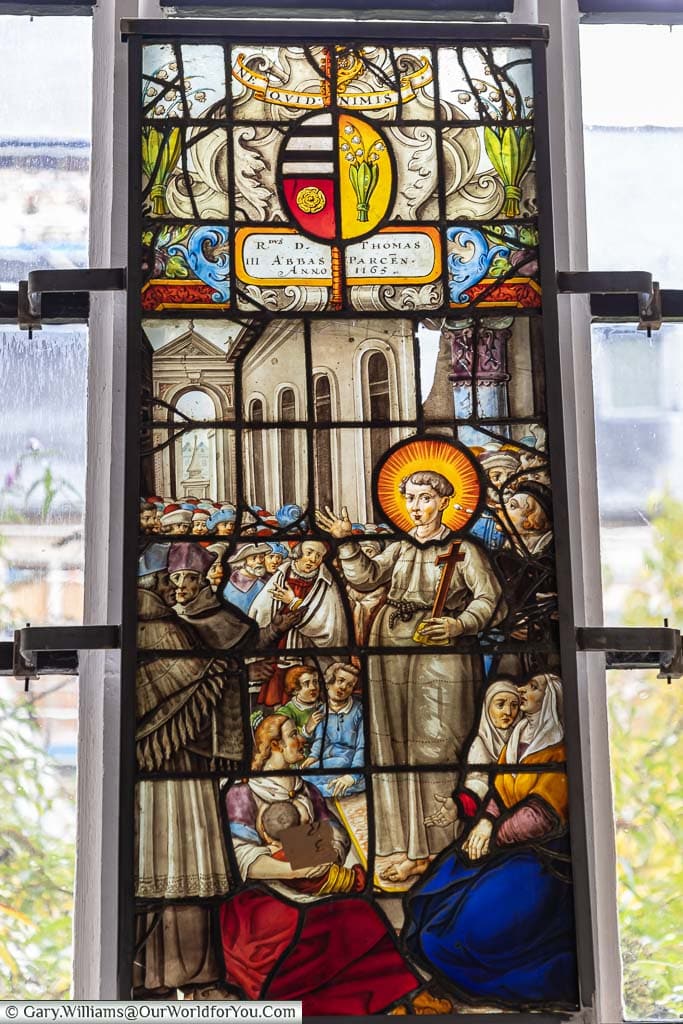
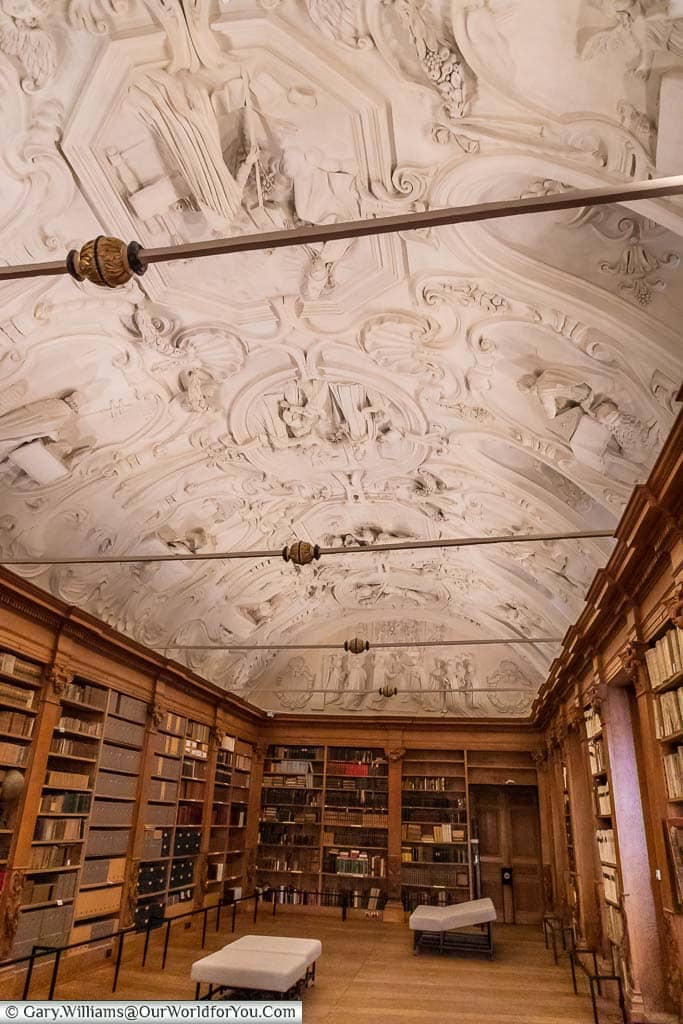
Discovering the Great Beguinage
Strolling back in time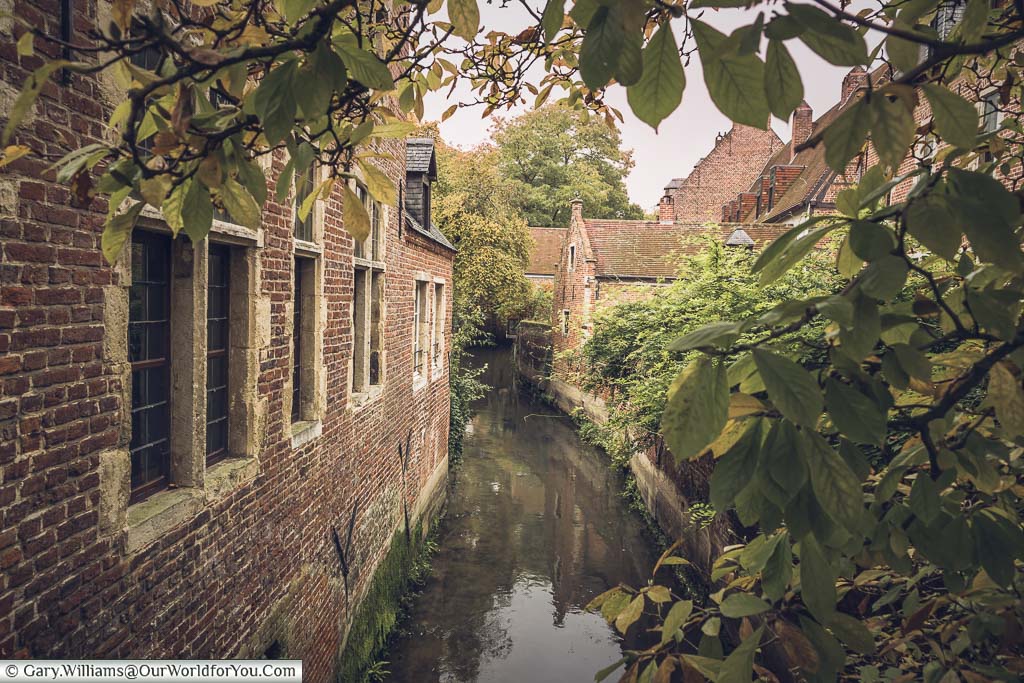
The beguines were single ladies who lived self-sufficient lives and took no religious vows. Their lives were modest and, through simple means, supported the sick and disadvantaged within their community. At the beginning of the 17th century, 360 beguines lived in Great Beguinage Leuven.
There are a few remaining Beguinages within Flanders, and the Great Beguinage Leuven forms part of a UNESCO World Heritage Site. You are free to stroll around the cobbled lanes of this walled community, which has been restored and preserved by KU Leuven.
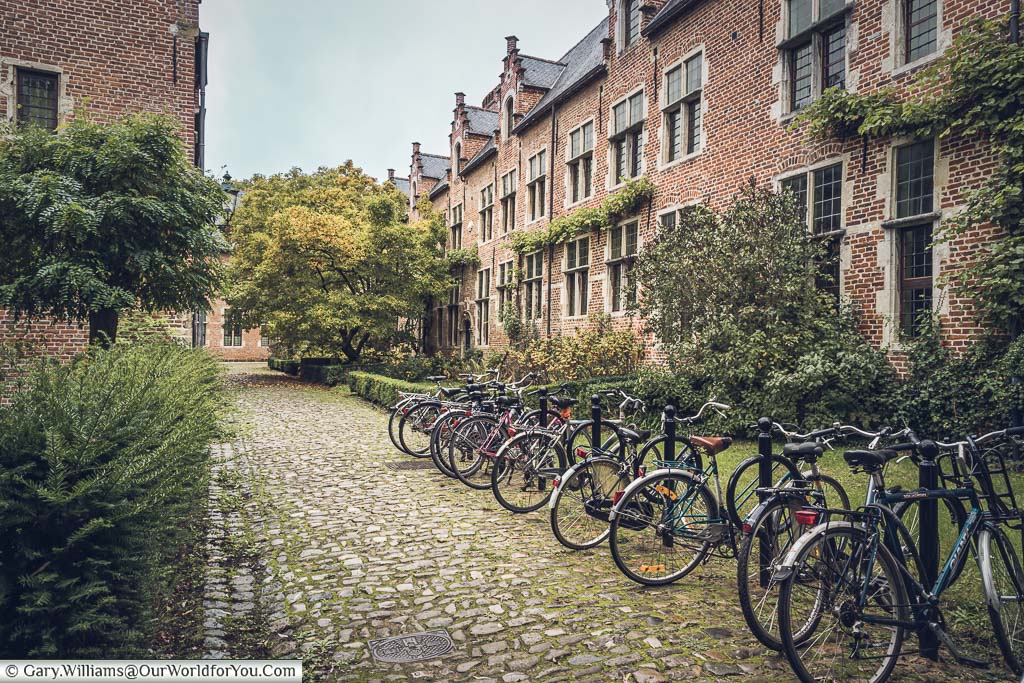
Ambling around the Great Beguinage is like stepping into another little world; it is fascinating. Within the 3 hectares of serene surroundings are 81 homes, convents, courtyards, winding alleys, gardens, and recreational buildings.
The Beguinage was dissolved in the late 18th-century, although the beguines continued to live in the walled community. Now the beautifully kept cottages are occupied by university lecturers and students.
It really is a pleasure to visit.
Strolling Leuven’s historical streets
A Flemish treat awaitsWhat I love about visiting a new town or city is exploring its historic streets on foot. Discovering those quirky little features, a fascinating sculpture or just admiring its stunning architecture. Leuven certainly has all of this in abundance.
The cobbled-stone streets are a pleasure to stroll around in Leuven, and so are its ancient squares. The Grote Markt will undoubtedly stop you in your tracks; the beautiful buildings are incredibly well-preserved.
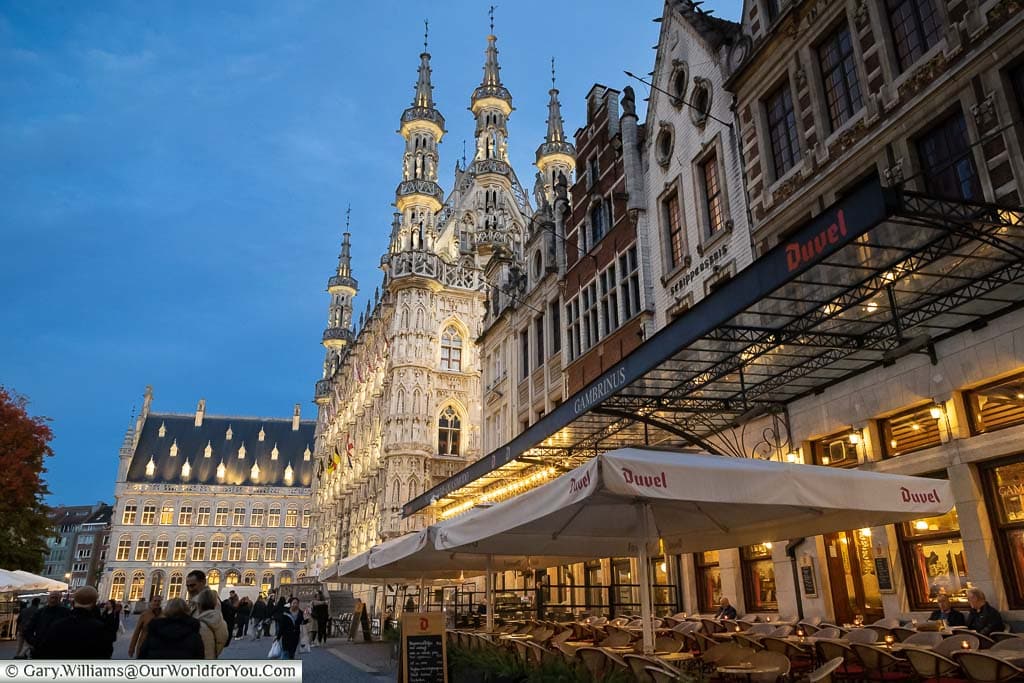
Leuven’s cloth market brought vast wealth and prosperity to the city during the 14th and 15th centuries. Evidence of this can be seen all around the Town Hall, the Grote Markt and the Cloth Hall by the Oude Markt.
Today the rectangular Oude Markt is bustling day and night and has the nickname the “longest bar in the world” for the number of bars and restaurants. At the far end of Oude Markt is the Holy-Trinity College, which was formed in 1843.
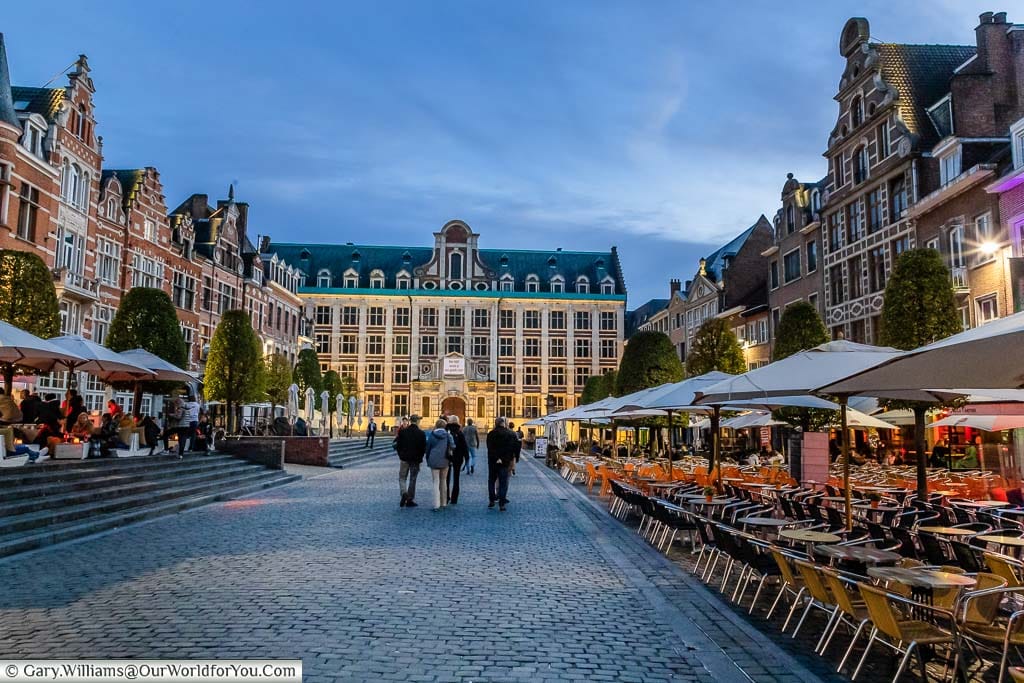
Throughout Leuven, you’ll spot some delightful sculptures; one we spotted in Oude Markt is ‘De Kotmadam’. This bronze was unveiled in 1985 and is a tribute to the local landladies who let their rooms to students. Perhaps not how I remember landladies.
Just across from Grote Markt in Rector de Somerplein is the ‘Fons Sapientiae’ sculpture by Jef Claerhout. Fons Sapientiae means ‘fountain of wisdom’ and was donated by KU Leuven in 1975.
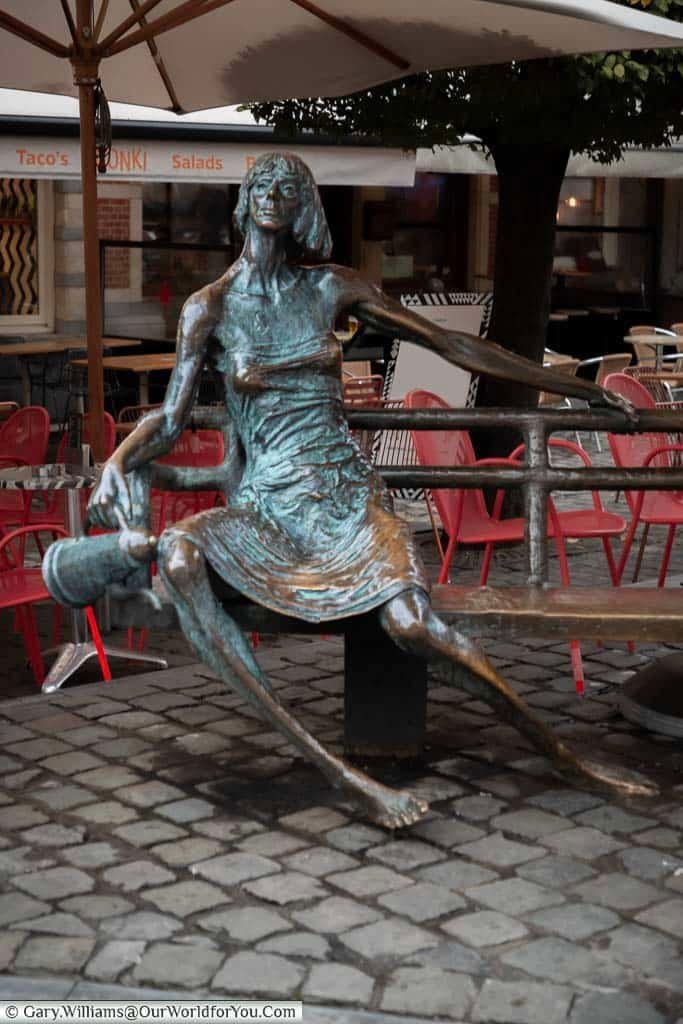
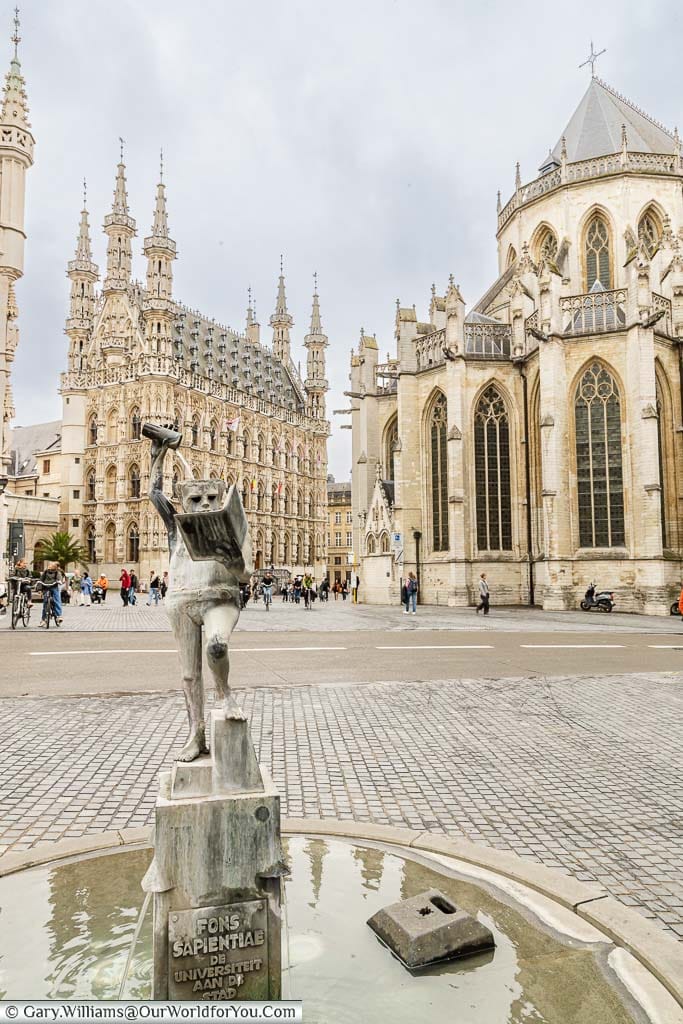
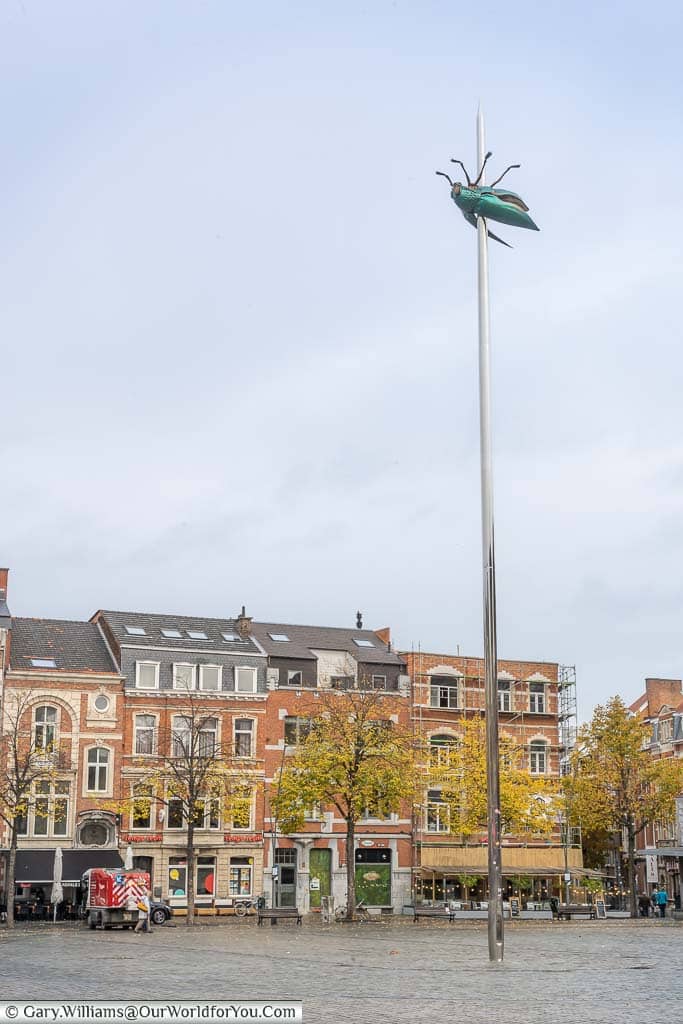
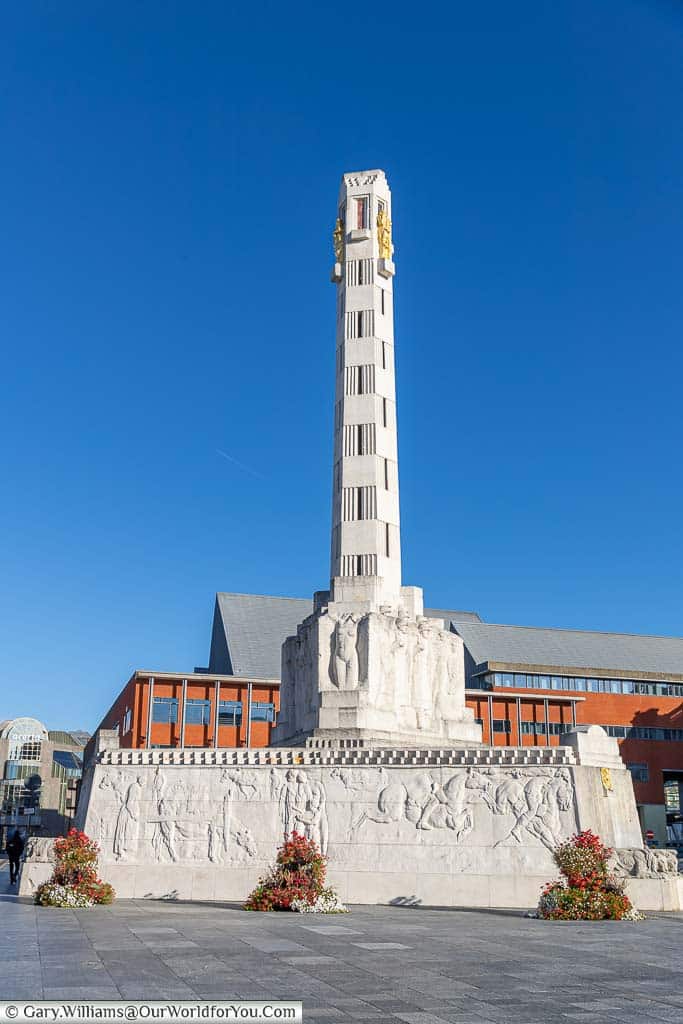
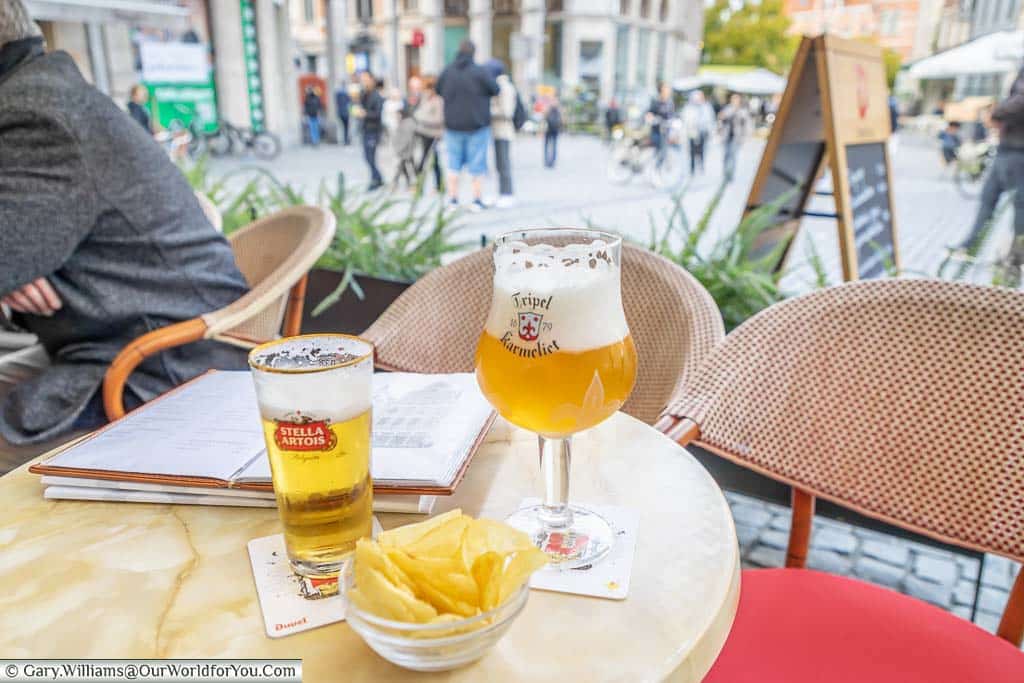
Our video of Leuven
We have created a YouTube video of our visit to Leuven. Why not take a look?
Also, why not subscribe to our YouTube channel and get the latest clips as we post them?
Where we ate in Leuven
Delicious food around every cornerOn our first night in Leuven, we were hosted by the restaurant Troubadour, located along Tiensestraat, a lively, bustling street.
Troubadour was a lovely restaurant; the surroundings were classic and stylish, the atmosphere was relaxed, and the staff were extremely welcoming and friendly.
The menu was in Dutch and English and had a varied selection of fish, vegetarian and meat dishes. Troubadour serves refined, traditional Belgian cuisine using fresh regional produce.
I chose pheasant served with a varied selection of vegetables. I especially enjoyed the savoury poached pear. It was incredibly delicious.
Gary chose a rich Belgian stew cooked with wild boar and vegetables. He also loved his choice.
We both couldn’t resist trying the dark Belgian chocolate mousse. The whole meal and the atmosphere at Troubadour were delightful, and the cherry on the cake was the digestif they gave us.
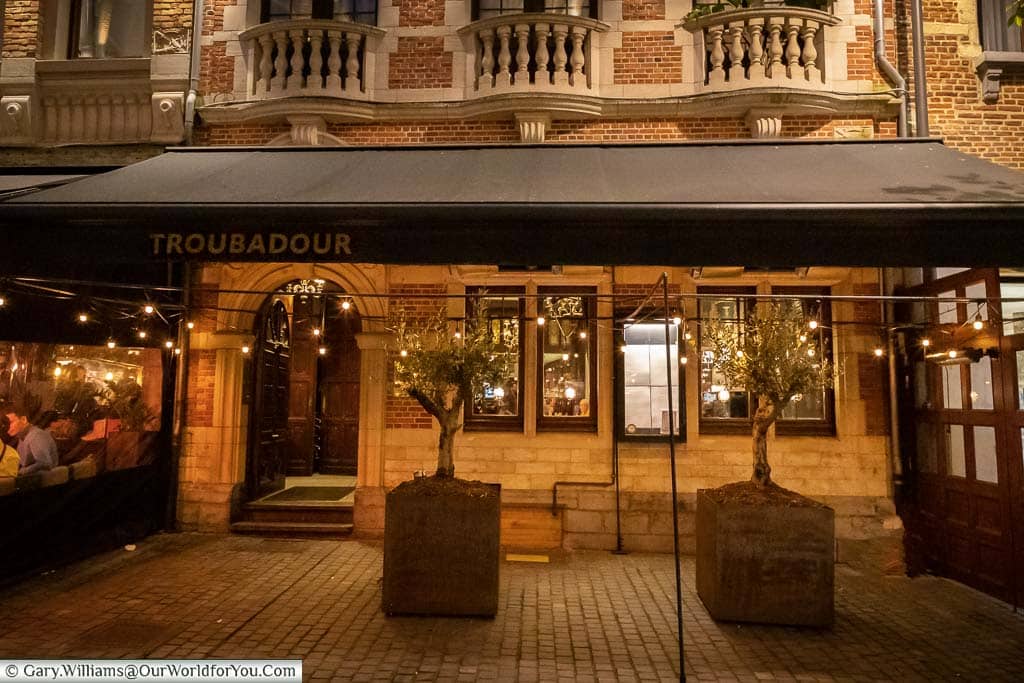
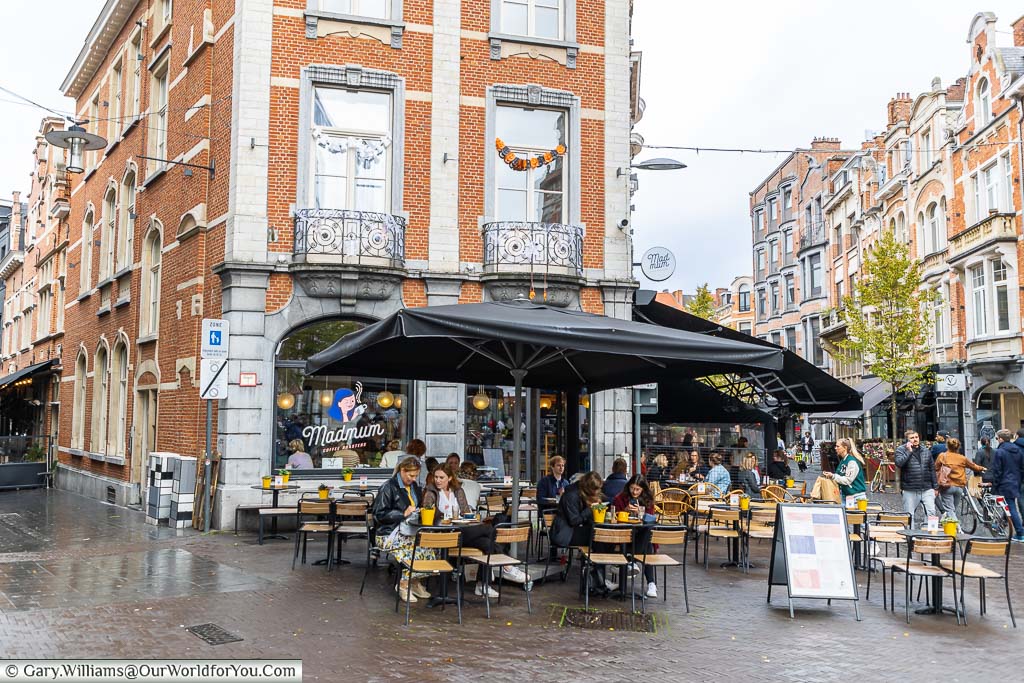
For our second night in Leuven, we were hosted by De Hoorn restaurant located at Sluisstraat 79 in the former Stella Artois brewery. It was here in 1926 that the world-famous tipple was brewed. Downstairs is a cosy bar, and upstairs is a lively restaurant. The staff were extremely welcoming and helpful.
Gary and I both chose burgers which were incredibly tasty. I had the ‘Burger De Hoorn’, with Stella dressing, cheese, lettuce, tomatoes, mustard mayonnaise and frites. Gary selected the ‘Smokey Burger’ with Leffe-onion, BBQ sauce, bacon, lettuce, tomato and frites.
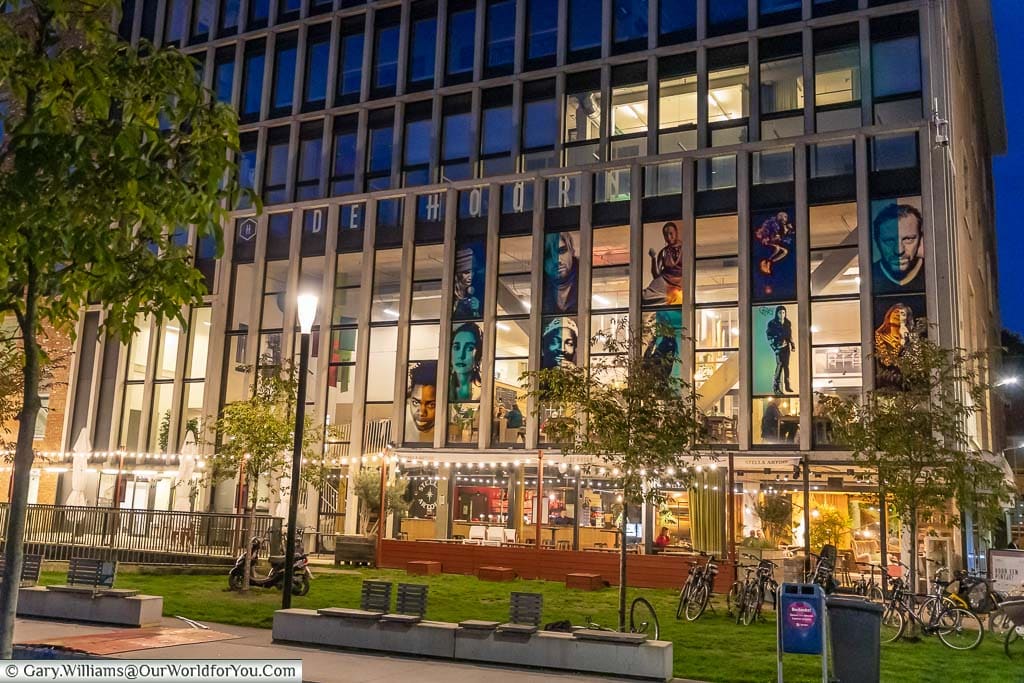
Where we stayed in Leuven
Pentahotel, in the heart of historical LeuvenDuring our stay in Leuven, we were hosted by Pentahotel Leuven.
Pentahotel is incredibly central, and no sooner you step outside the hotel, you’re strolling the historical cobbled-stone streets. Bearing in mind how central Pentahotel is, it was very peaceful, perfect for a Leuven getaway.
The hotel is very modern, and glitter balls await as you step into the reception/bar. The staff were extremely accommodating and helpful during our stay, and we could check into our room early.
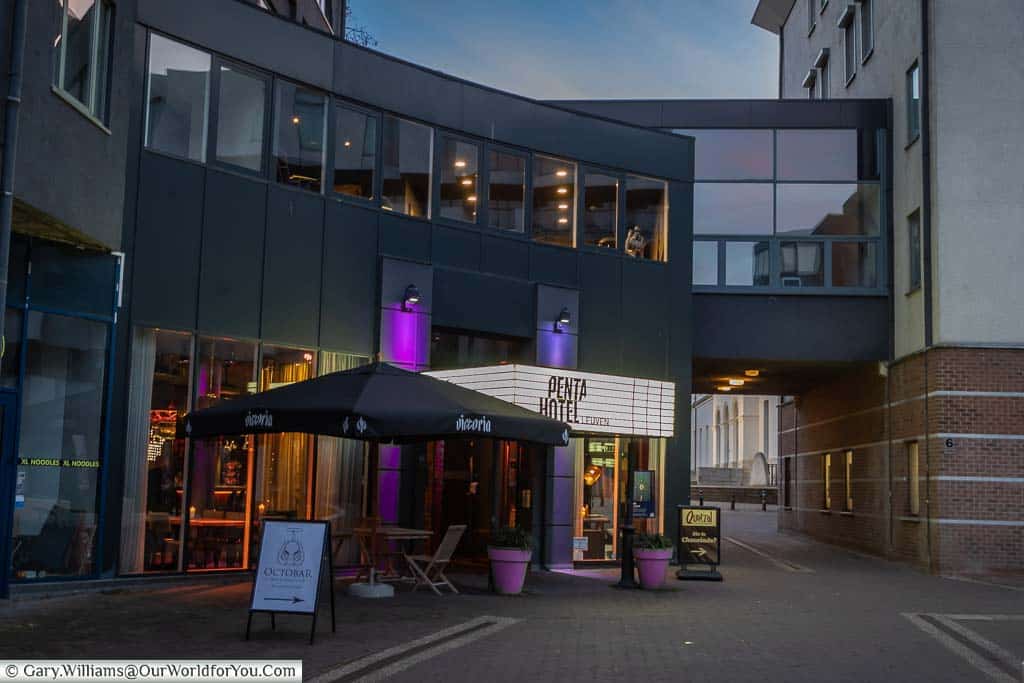
Our bedroom was very comfortable and clean and had additional seating. The desk area was a reasonable size, allowing us to set up our charging station and work on the laptop.
Our spacious bathroom included all your essential toiletries and a lovely walk-in shower.
What I particularly liked about this hotel was that if you were staying two nights or more, the hotel offered an incentive to skip housekeeping. To keep hotel laundry to a minimum, they offer a free drink voucher instead for its guests to use at their bar. Either a soft drink or an alcoholic, your choice.
We opted for the vouchers.
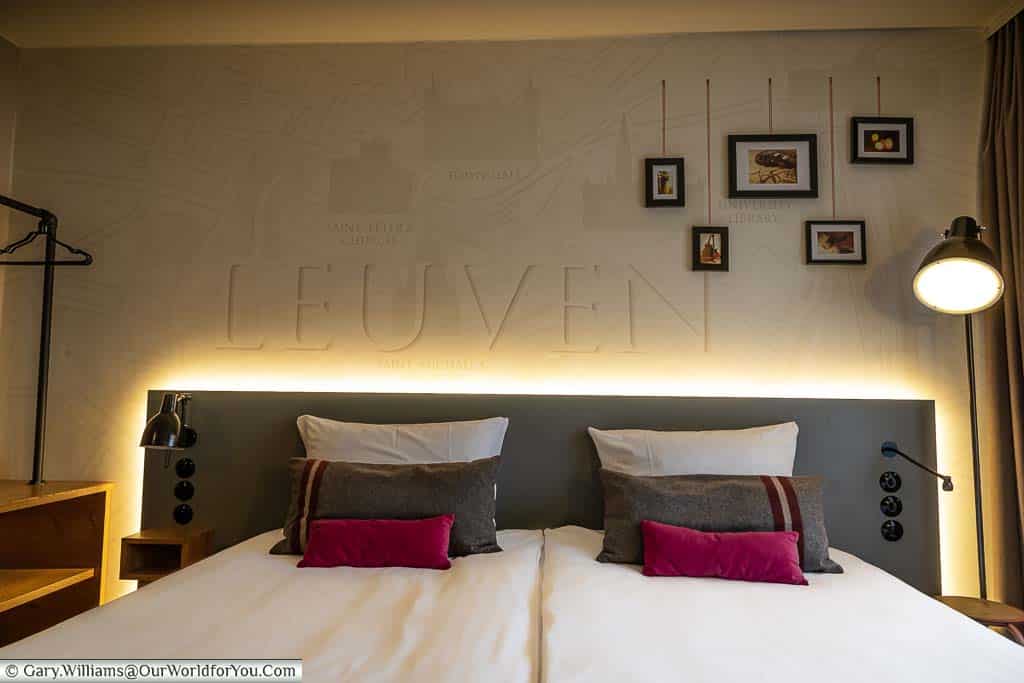
There was a wide variety of food and drink available at the buffet breakfast. The food was constantly replenished, and ample coffee, tea, and fruit juices.
The Wi-Fi speed from our bedroom was 12.2mbps download and 9.5mbps upload.
We visited Leuven as part of a Flanders road trip, so the on-site underground car park was perfect and was chargeable at €25 per day.
Disclaimer
* This post may contain links to affiliated sites where we earn a small commission at no additional charge to you.
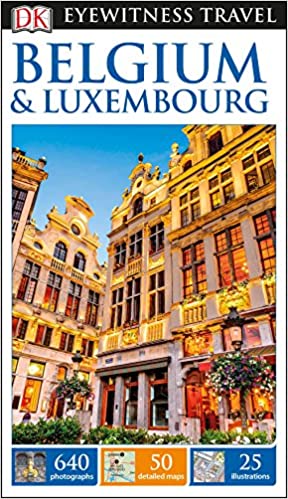

well I enjoyed the film on Leuwen where I will spend 10 days in June as our son moved from Tokyo to work for Imec in Leuwen. The place looks fantastic and its history is just as fabulous. So many great buildings to visit (the library is my favorite). So overall your film has put us in a great mood to go to Leuwen many times in the future. Thank you
Oh fantastic Anita, you’ll see quite a lot in 10 days. The library was amazing, particularly wandering around the upper balcony. You must also stroll to the Great Beguinage this a delightful little oasis in the middle of the city, it is believed to have been founded in 1205, it is fascinating.
Have fun and I hope your son enjoys living in Leuven.